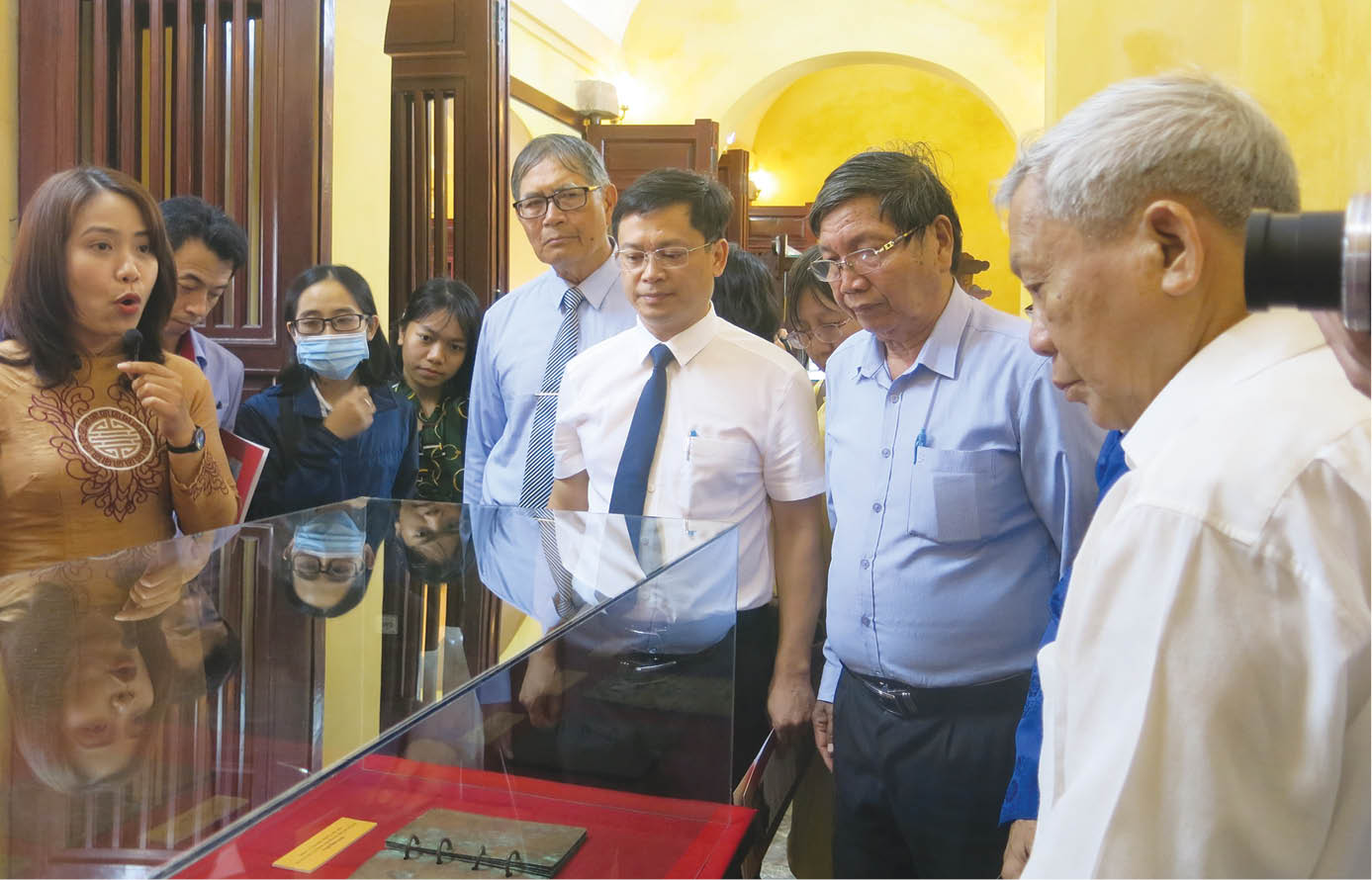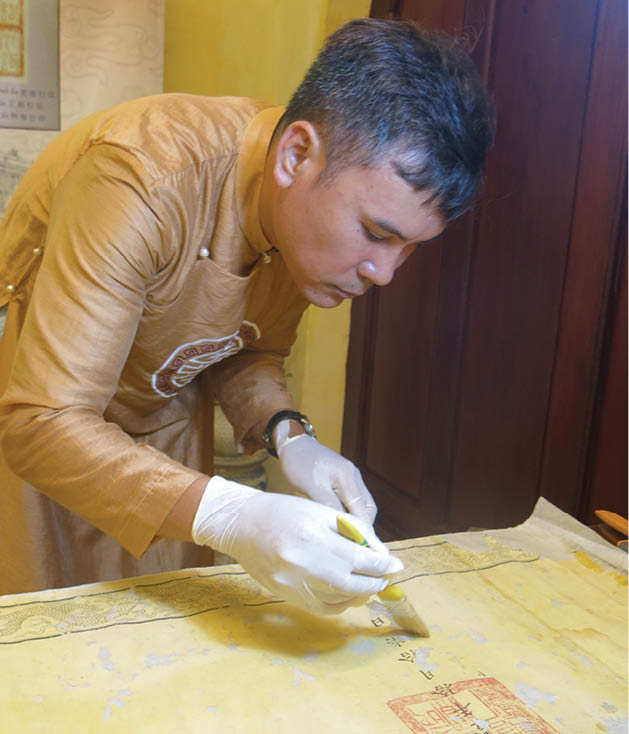
Tang Tho Lau is where many precious documents of the Nguyen Dynasty are stored
A unique heritage
Tang Tho Lau was built in the summer of 1825, under the reign of Emperor Minh Mang, as the national archives. Existing for 120 years (1825-1945), this library stored rare and valuable documents such as many texts, geographical documentations and papers of the court during that time. This is a rare "National Archives" of the monarchy period that is still quite intact in Hue.
According to research conducted by Hue Monuments Conservation Center, Tang Tho Lau was the place to store and preserve the documents of the ministries of Home Affairs, Justice, Ceremony, Construction – Transport, Education, and Defense, since the reign of Emperor Gia Long; the treaties signed with France regarding land and their rights to rule in the North, the Central and the South regions; and the diplomatic documents with the Chinese dynasties.
Tang Tho Lau itself has a distinctive architectural style in the Nguyen Dynasty’s complex of architectural relics, emphasizing the use of wood. The overall architecture of the Tang Tho Lau was logically designed to perform well its function of keeping and preserving important documents and papers of the royal court.
To avoid the spread of fires as well as protect the national original documents, the library was built on an islet in the middle of the lake, including 2 floors: 7 rooms and 2 wings on the upper floor, and 11 rooms on the lower floor. Surrounding the four sides, handrails were built. The structure was placed in the middle of a square lake called Hoc Hai lake

Tang Tho Lau, a place to preserve and promote documentary heritages - a specific heritage of Hue ancient capital
From 1945 onwards, Tang Tho Lau have experienced many ups and downs. This was also the time the building ceased to perform its function. Through the historical events, the building was seriously damaged and degraded. Most of the books, bibliographies and geographical documentations stored here have been lost and scattered to many places such as Da Lat, Saigon, Hanoi, or were destroyed by the war.
Mr. Vo Le Nhat, Director of Hue Monuments Conservation Center, said that Hue needed a document archive center in order to promote the inherent potentials of the ancient capital, in the long-term strategy of restoration and heritage conservation. Thus, Hue Monuments Conservation Center has restored and rebuilt Tang Tho Lau.
The Tang Tho Lau research and restoration project started in the early 2000s after it was handed over to the Hue Monuments Conservation Center. In 2014, the project to restore this building was officially initiated.
The restoration project has been completed so far. This is not just an addition of another unique heritage to the complex of Hue imperial architectural monuments, but more importantly, the ancient capital has restored a reputable “National Archives”, opening up opportunities to revive documentary heritages which are inherently rich here.
Large-scale document storage center
According to Mr. Vo Le Nhat, what the Hue Monuments Conservation Center tried to do was not the restoration of the status quo of Tang Tho Lau in the past, but also the restoration of a document archive center of national and regional stature, returning to its historical status and role. This is not only a place to keep documents, but will also be a place to preserve and promote a particular type of heritage of the ancient capital of Hue: documentary heritage.
Tang Tho Lau is currently storing written documents, videos and images. There are more than 70,000 written titles and documents of many different genres and formats, such as Han-Nom books, ancient bibliographies, archaeological works of the Nguyen Dynasty, and books of arts, architecture, culture, Buddhism, religion, beliefs, linguistics, and maps.
Regarding Han-Nom documents in manuscript form, most of them are original handwritten documents on poonah paper. The main language is in Han scripts and some papers are in Nom scripts. The documents are stored and the integrated archives are in the form of digital files.
For most of these documents, such as the royal documents, geographical documentations, ordinations and etc., there is only one copy for each kind. Therefore, they have very high historical values. This document archive was formed during the operations of the Nguyen dynasty government, reflecting aspects of the country's political, economic, cultural-social and scientific-technical life in certain historical periods.
The video materials introducing rituals of worship under Nguyen dynasty, such as Nam Giao sacrifice and Xa Tac sacrifice were re-enacted by ritual activities with careful attention to every detail. The images include more than 4,000 pictures collected from many different sources, vividly reproducing the Nguyen Dynasty’s imperial court with features of cultural activities, beliefs, rituals, and primitive architecture.
Ms. Le Thi An Hoa, Head of the Research Office, Hue Monuments Conservation Center, said that in addition to the archives, the center will collect more valuable documents in the national archive centers and update new books. This will turn Tang Tho Lau into a place to store documents related to Hue culture that readers and visitors can visit, learn and do research.
Mr. Nhat said that in the coming time, Hue Monuments Conservation Center would organize spaces in Tang Tho Lau for research work, especially for Hue cultural studies. At the same time, this is the place to store valuable documents and also the place to perform the task of preserving and promoting the value of Hue cultural heritages. In the future, this place will become a center to bridge past values to contemporary life.
Story and photos: Minh Hien